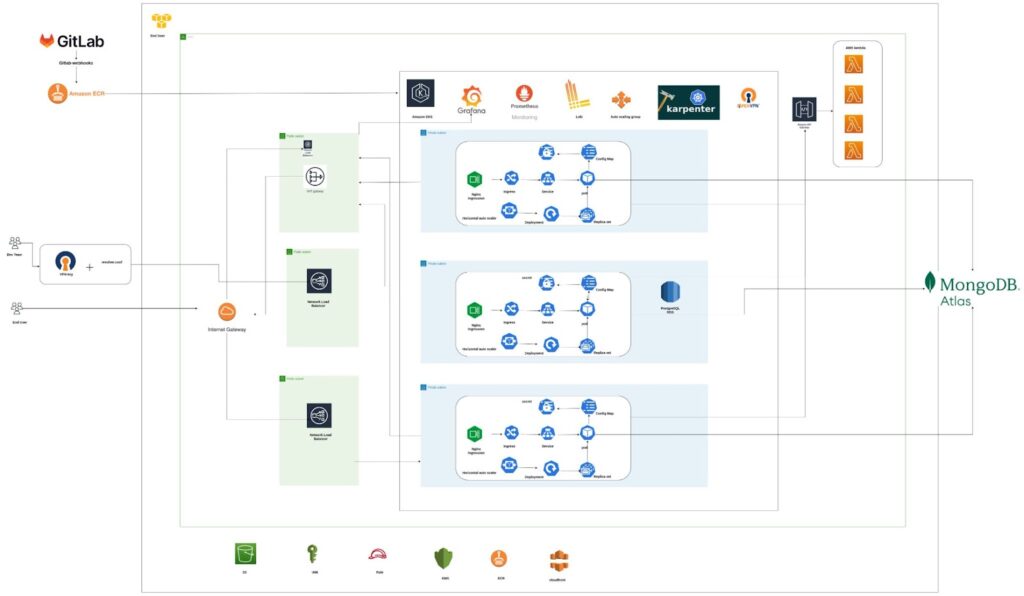Sweet Analytics: 360 marketing analytics platform for ecommerce leaders
Category: ecommerce
Services: DevOps, Cloud Architecture Design and Review, Managed Engineering Teams.
Category: ecommerce
Services: DevOps, Cloud Architecture Design and Review, Managed Engineering Teams.

Sweet Analytics is a marketing and customer analytics platform that offers services to eCommerce retailers. It provides a tool to automate marketing data in one place, grow sales, and understand customers better.
Our customer, Sweet Analytics is a marketing and customer analytics platform catering especially to the eCommerce industry. The client was experiencing limitations in terms of scalability, availability, integration, and security due to the fact that its cloud infrastructure was hosted on DigitalOcean.
As the platform grew and required more resources, it started experiencing performance issues and limited global coverage. Additionally, the platform faced challenges in integrating with other services and ensuring data security, which hindered its ability to serve its customers effectively.
We were able to provide the solutions to the problems faced by Sweet Analytics by utilizing Amazon EKS and several other AWS and third-party services.
As a key component of the solution, we utilized Amazon EKS to provide a scalable and reliable solution for Sweet Analytics. Amazon EKS allowed us to manage and orchestrate containerized applications seamlessly, providing an easy-to-use platform for deploying, scaling, and managing containerized applications. It also provided several built-in features for high availability, scalability, and security, which were essential for Sweet Analytics’ growing platform. The integration capabilities of Amazon EKS with other AWS services like Amazon RDS, AWS Lambda, and AWS KMS also helped us in building a fully integrated and secure platform for Sweet Analytics.
Our team set up a scalable and fault-tolerant infrastructure by using Karpenter for auto-scaling and Nginx ingress for load balancing. This ensured that the platform could handle large workloads and traffic spikes without performance issues.
For data security, we used AWS KMS for encryption and AWS IAM for access control, which provided robust security features to protect the sensitive data of the customers.
Finally, we set up monitoring and alerting using Grafana, Prometheus, and Loki, which helped in detecting and resolving issues proactively.
Our team has built a CI-CD pipeline for each microservice deployed in the application. This helps us achieve faster deployment time.
We helped the client create the following modules

Using these monitoring tools, Simform can proactively identify and resolve issues before they impact end-users, ensuring a high level of performance and availability for the client’s microservices-based architecture.